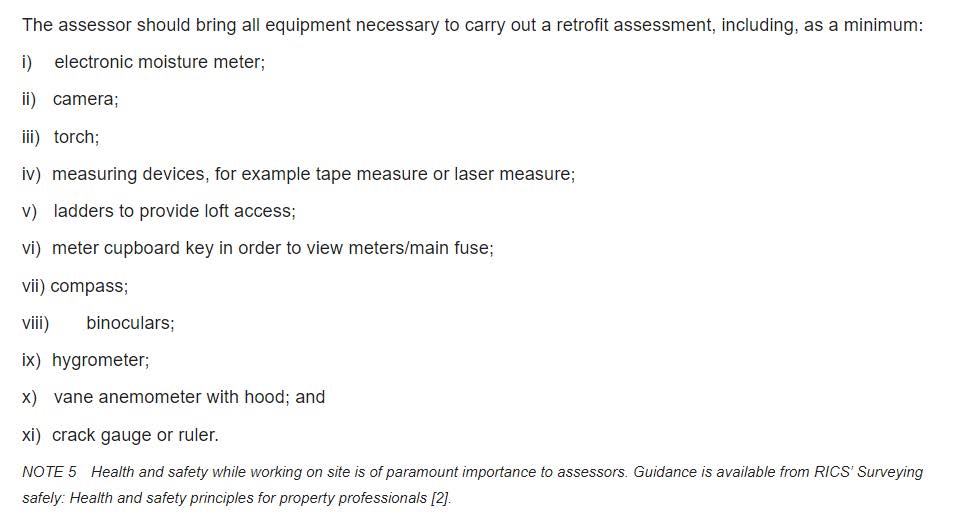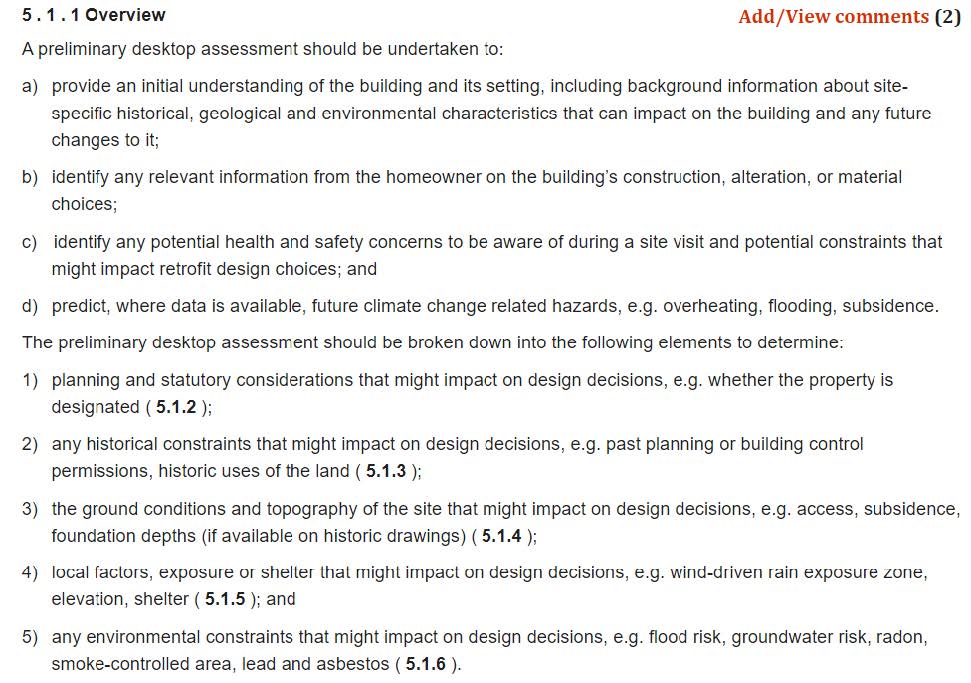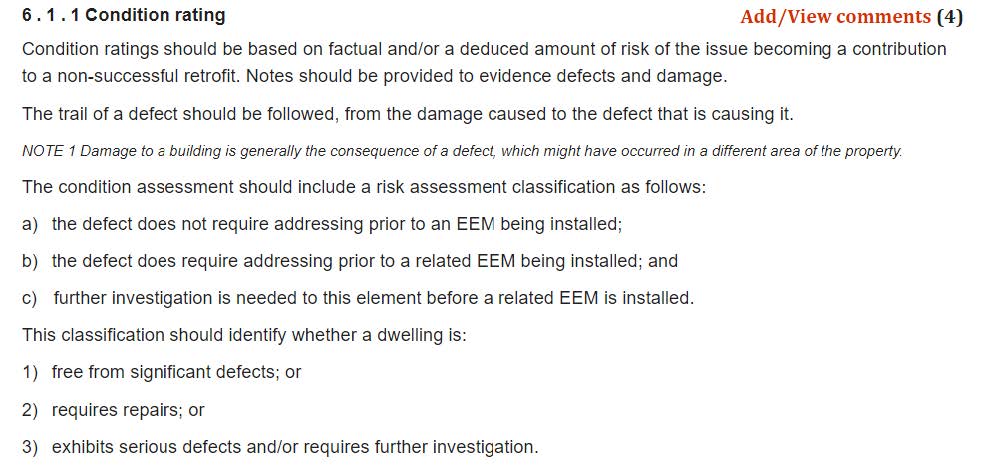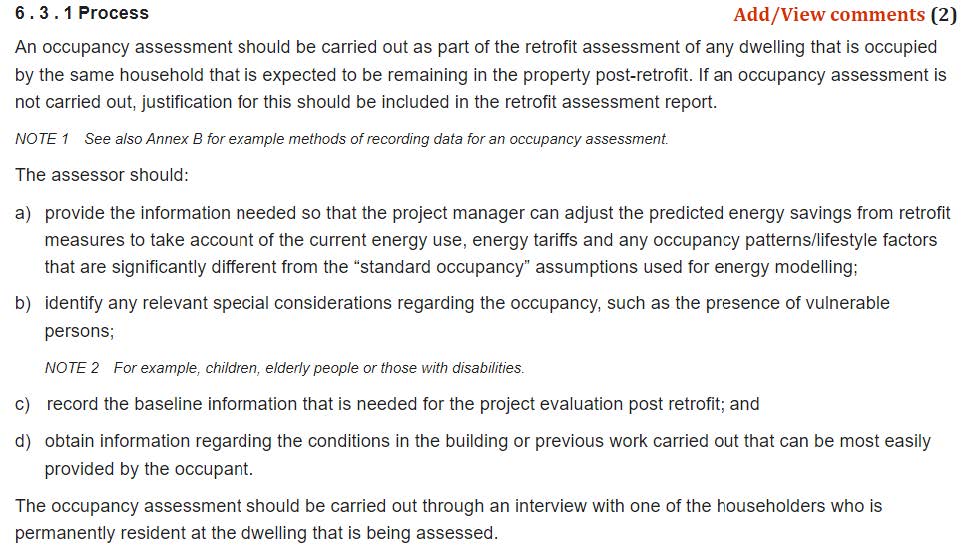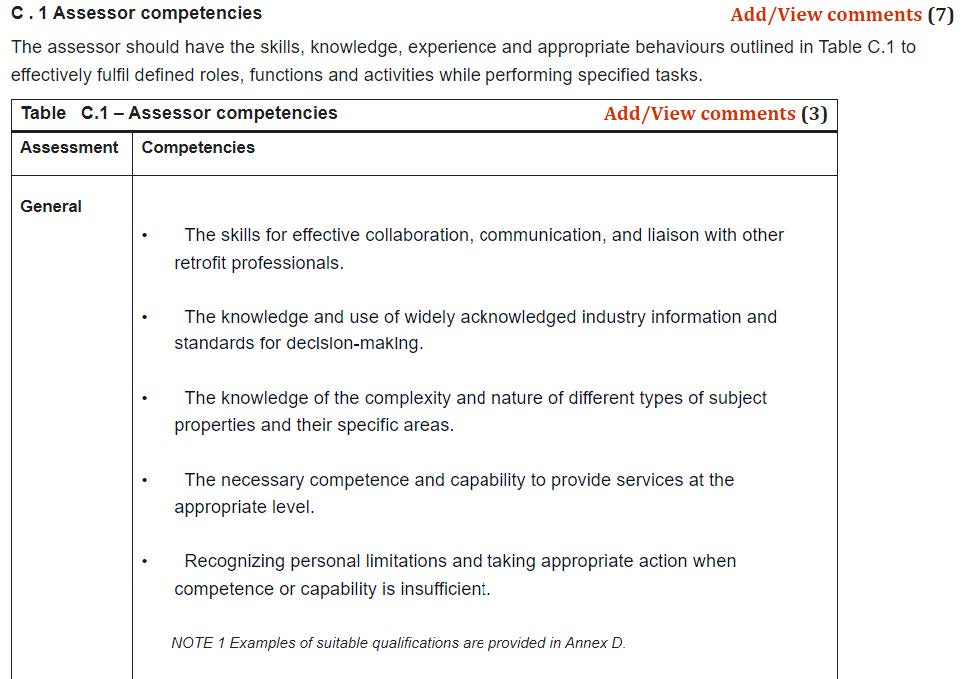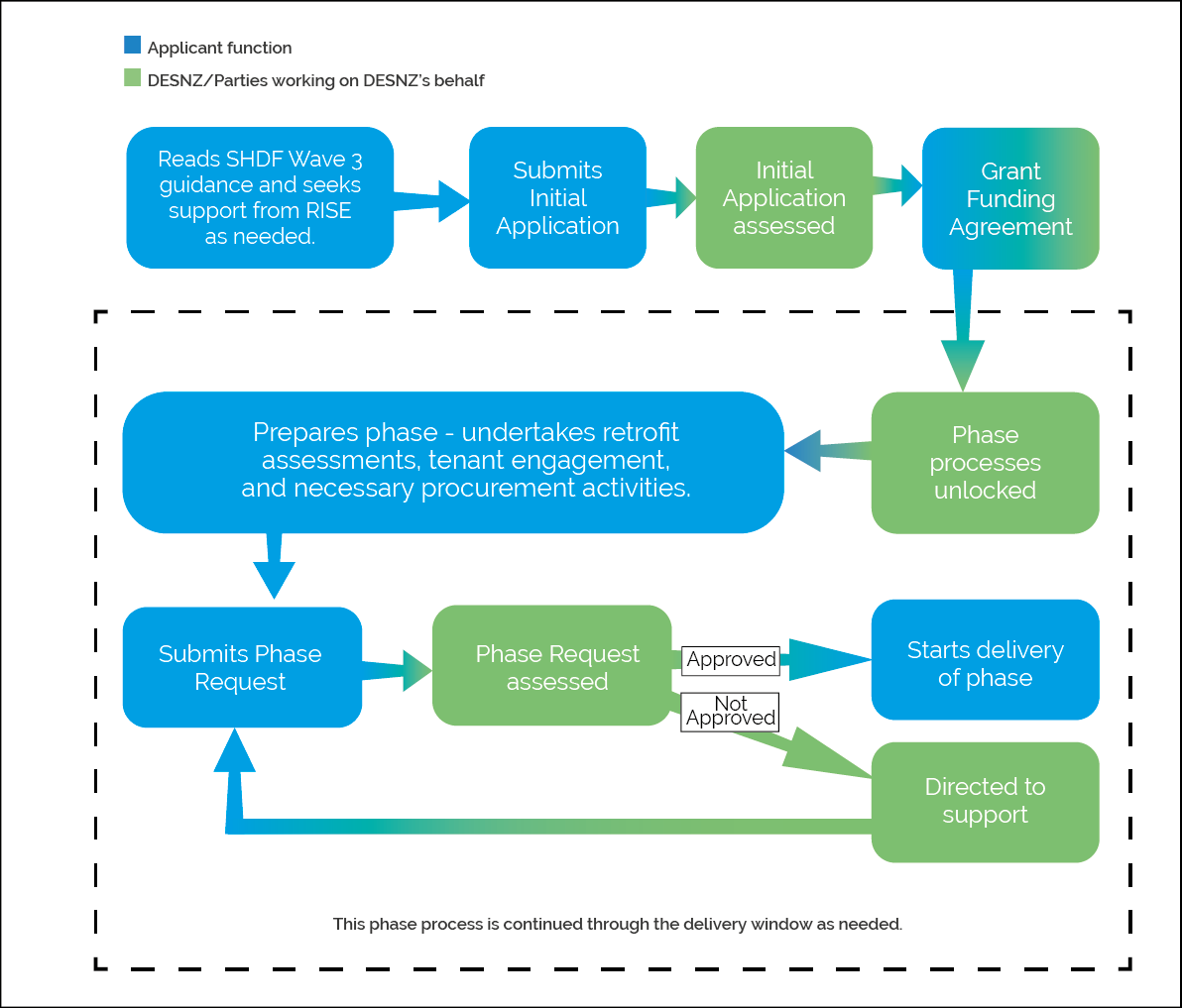
Consultation Response – Energy Company Obligation 4 & the Great British Insulation Scheme: Consultation on mid-scheme changes
Consultation: Energy Company Obligation 4 and the Great British Insulation Scheme: consultation on mid-scheme changes
Closing Date: 12 December 2024
Response submitted by: National Insulation Association
For more information, please contact: info@nia-uk.org
About the National Insulation Association
The National Insulation Association (NIA) represents the insulation industry in the UK with a member base comprised of installers, system certificate holders, and manufacturers who provide a wide range of insulation solutions for homes and buildings. The NIA and its members are fully committed to maintaining and raising standards within the insulation industry.
Part 1: Mid-scheme changes to current requirements
Do you agree that a household should be able to receive both loft and cavity wall insulation under GBIS?
Yes, we agree that eligible households should be able to receive both loft and cavity wall insulation under GBIS. This change will improve outcomes for residents and installers. As noted in the consultation document, fixed costs for installers, including compliance costs, are very high proportionally when only carrying out a single low cost measure. This means that it is often not viable or profitable for installers to work on the scheme, the knock-on effect of this being a shortage of installers willing to work on GBIS because many will favour more profitable schemes like ECO4.
Under the current scheme rules, a home may be need of both a loft insulation top up and cavity wall insulation, however it would only be allowed one of these measures. From an insulation perspective, this is counterproductive because about one-third of all the heat lost in an uninsulated home escapes through the walls1. Hence, by topping up loft insulation but not carrying out cavity wall insulation at the same time, the heat loss problem will not be effectively solved because a significant amount of heat will still be lost through uninsulated cavity walls. For this reason, we support the proposed amendment to allow households to receive both loft and cavity wall insulation.
However, it is our view that this multi-measure approach should be extended to cover all eligible measures. A whole house, multi-measure approach to retrofit will always deliver the best outcomes for residents in terms of thermal comfort and energy bill savings. Moreover, while loft insulation and
cavity wall insulation are undoubtedly effective measures, there are many other insulation measures which can deliver significant energy savings for households. Even if loft and/or cavity wall insulation is installed in a home, the building may still be leaving significant amounts of heat through other building elements. For example, if a home has uninsulated solid walls, residents could be losing 45% of their heat through the walls. In addition, up to 15% of the heat in a room can be lost through uninsulated floors2, while air infiltration through a sash window in good condition can be reduced by as much as 86% by adding draughtproofing3. If these major sources of heat loss are left untreated, residents will remain cold and their energy bills remain unnecessarily high, even after receiving support through GBIS. Therefore, we believe that the potential for installing multiple insulation measures through GBIS should not be limited to loft and insulation but should instead be extended to any combination of insulation measures that are recommended on a valid retrofit assessment. This will support a holistic, whole house approach to retrofit which will deliver much better outcomes for residents than a piecemeal, single measure approach.
1 Energy Saving Trust (2024). Cavity wall insulation. Available at: How to install cavity wall insulation – Energy Saving Trust
2 Kingspan (2023). A Guide on How to Insulate Your Floor. Available here: A Guide on How to Insulate Your Floor | Kingspan IE
3 Historic England (2018). Draught-Proofing. Available at: Draught-Proofing | Historic England
Do you agree that we should allow this change to be effective from the date of consultation? If not, would you prefer the change to be effective from the date of Government Response, or the commencement date of the legislation?
Yes, we agree that this change should be implemented from the date of this consultation; this will ensure that eligible households are able to benefit from the changes as early as possible.
Do you agree with allowing projects meeting the ECO4 rules to count towards an obligated supplier’s GBIS obligation?
Yes, we agree that projects meeting the ECO4 rules should be allowed to count towards an obligated supplier’s GBIS obligations. ECO4 is a more effectively designed scheme than GBIS as it supports a multi-measure, whole house approach to retrofit, whereas, as a single measure scheme, GBIS encourages a piecemeal approach to retrofit which is not best practice and does not deliver the best outcomes for residents. As well as delivering greater benefits for residents, ECO4 is a more attractive scheme for installers because its multi-measure, whole house approach lowers fixed costs and increases profit margins for installers. Importantly, ECO4 is a fuel poverty scheme, therefore allowing more projects meeting the ECO4 eligibility will enable more energy efficiency measures to be delivered to those households who need it most. The NIA believes in an approach to retrofit that prioritises the most vulnerable households, as such, we support ECO4 projects being allowed to count towards an obligated supplier’s GBIS obligation.
If implemented, it is important that appropriate safeguards are put in place to ensure that no ‘double counting’ takes place, i.e. suppliers counting one project towards both their ECO4 and GBIS annual bill saving obligations. This would result in fewer retrofit measures being delivered overall across both programmes. With so many households in fuel poverty and more money struggling with high energy bills, it is vital that there is no reduction in the number of overall energy efficiency measures delivered through both schemes.
In the long term, the Government should look to tackle the root causes of the current issues surrounding GBIS delivery to ensure that both schemes operate effectively. For example, it should allow multiple measures to be delivered to the same property through GBIS for all eligible households. This would deliver greater overall bill savings for households and reduce fixed costs for installers, thereby addressing the main reason for under-delivery on GBIS.
Do you agree with our preferred option of a transitional arrangement that enables projects that have met the ECO4 rules during all phases of GBIS to be capable of notification and therefore count towards GBIS obligations in phase A, B, or C?
Yes, we agree with this option.
Do you agree that the proportion of GBIS obligations that can be achieved via delivery under ECO4 rules should be limited? What should the limit be? Please provide as much detail as possible.
No, we do not think the proportion of GBIS obligations that can be achieved via delivery under ECO4 rules should be limited. ECO4 is a multi-measure scheme targeted at fuel poor households that delivers greater annual bill savings per household than GBIS at a lower delivery cost per ABS, as outlined in the consultation. Since ECO4 measures are a more cost-effective way to lift households out of fuel poverty, we do not think that there should be a limit on the proportion of GBIS obligations that they can constitute.
Do you agree that a conversion factor should be applied to projects meeting the ECO4 rules that count towards GBIS?
Yes, if GBIS is to remain within its overall budget of £1 billion, it makes sense to apply a conversion factor to account for the fact that it costs less to achieve the same annual bill savings through ECO4 measures. However, should delivery exceed expectations to the extent where the scheme’s budget is likely to go beyond the original £1 billion allocated from energy suppliers, the Government should remain open to increasing the scheme’s budget to ensure that all eligible and interested households are able to receive measures.
Do you agree with our estimate that the cost of achieving an ABS under GBIS would be £X/ABS with the proposed scheme changes? Do you agree that the cost of achieving an ABS under ECO4 (excluding EFG and SWI minimums) would be £Y/ABS?
Yes, we agree that the cost of achieving the same annual bill saving will be lower under ECO4. As a multi-measure scheme, fixed costs are proportionately lower on ECO4, therefore more funding is spent on delivering retrofit measures and less on administrative activities. Moreover, a whole house retrofit is more effective at delivering overall bill savings for households than a single measure scheme like GBIS which often leaves major sources of heat loss unaddressed.
We are not considering utilising TMLP for ECO4 at this time. Do you agree with our approach?
Yes, we agree with this approach as ECO4 is a multi-measure scheme which includes more complex and higher risk measures. Thus, a thorough quality assurance and risk management process such as that set out in PAS 2035 is needed to mitigate risk and protect households.
Given the structure of the version of TMLP suitable for GBIS, what are your views on the average cost assumptions for compliance with its processes (forecast at approximately £400 to £500)?
Compliance costs can vary significantly from £500 – £1200 per install. However, there is likely to be a reduction in costs for coordination and design services for TMLP procedures in light of appropriate interventions.
We understand that most companies working on single measures of this nature would likely already have either a low cost design intervention (off the shelf) or in-house resource for the simple system design for these basic interventions. That said any lodgement services that are contracted externally are charged at an industry premium and usually suffer from low supply for the pace of low cost interventions, so it would be expected that with reasonable uptake of TMLP there should be some cost saving seen by GBIS contractors.
What do you think could be the main drivers for any potential savings between the costs of compliance with PAS 2035/2030 and the costs of compliance with TMLP for GBIS?
In our opinion, the TMLP approach negates the involvement of a retrofit coordinator and qualified retrofit designer (as per PAS 2035 guidelines). Generally we understand the motivation around low cost interventions is to run installations at pace to create volume revenue returns. If it is deemed possible to achieve GBIS bankable savings by limiting the administrative time lag to a full coordination project this would be considered a small win for retrofit installers.
Ventilation interventions cannot be overlooked, but if Trustmark are truly only going to permit low risk loft insulation to be carried out, then this would be for cavity properties that likely already have some ventilation interventions already in place. If this is not the case, it is unlikely the loft insulation measure would be considered low risk due to the condition of the property.
From the perspective of a local insulation installer, the biggest cost will still be fitting electrical ventilation interventions in wet rooms with due diligence and in accordance with PAS, where these have not been applied to the property previously. Therefore, savings would largely depend how well recorded and accountable these ventilation strategies and interventions are under TMLP in comparison to PAS. Whilst it would be an administrative saving to an installer of low cost fabric measures, it could present potential risk of omission or validation should future issues arise.
In terms of heating controls, they are only likely to be processed through a PAS or TMLP procedure where it forms part of a funded route. For example, consumers that qualify for the ‘low income group’ can benefit from loft insulation with a heating control measure through GBIS. This is a very small and niche group, so whilst it would create some simple and easy wins for local contractors, the majority of heating control measures are usually taken up through able to pay offers provided by energy suppliers. Whilst they will follow building regulations and appropriate electrical testing and commissioning procedures, it is unlikely that they would take to the time lodge such installs in the TM Datawarehouse.
Are there any other changes, not proposed in this consultation, that you believe would increase levels of delivery under GBIS? If yes, please provide details.
Enabling multiple measures to be delivered under GBIS would increase the number of measures installed under the scheme. This would reduce fixed costs for installers, including compliance and administration costs, thereby enabling more of the scheme’s budget to be spent on installing retrofit measures and less on A&A activities. Taking a whole house, multi-measure approach to retrofit would also deliver greater bill savings and outcomes for individual households.
Another way to increase levels of delivery under GBIS would be to increase the number of eligible measures available to households. Specifically, we would like to see draught proofing included as an eligible measure under the scheme. For many vulnerable households, draughtiness is one of their primary concerns and without adequate draught proofing, the financial and environmental benefits of these other measures is greatly reduced. For instance, there is little point in cavity wall and loft insulation if all the property’s heat escapes through draughty windows and doors. For a significant number of UK properties, building regulations mean they are not able to benefit from many energy efficiency improvements. This is particularly true for leasehold flats and listed homes. For many of these properties, draught proofing is one of the only options available to them if they want to lower their energy bills and make their home warmer. Moreover, as draughtproofing is a low cost, high impact measure, its inclusion with GBIS would enable the scheme to deliver more insulation measures to a greater number of households using the same overall budget.
DESNZ’s cost assumption for compliance with PAS 2035/2030:2019 processes is £1,030 per property retrofit (in 2023 prices) for both ECO4 and GBIS. The assumed cost does not vary according to how many measures are installed. Roughly what is the average cost you have experienced complying with the current PAS 2035/2030:2019 processes per property retrofitted? Please answer for both multimeasure and single-measure projects that have upgraded the fabric of a building, as relevant.
For multi measure projects, between £900 and £1100 is a fair representation of market rates incurred in covering compliance with retrofit assessments, retrofit design and retrofit coordination services and lodgement. It does not include the implied administrative costs of ensuring installers and the supply chain comply with the documentation requirement. Our members have experienced a continued uptake in administrators across the sector to enable this quality side is sufficiently documented and managed correctly.
For single measure projects, we have found that a number of industry providers are able to meet the demand for design and coordination through simple in-house provision or through external companies providing services at lower rates than where an architectural intervention is considered for design. As such, we would not expect multi-measure design processes that follow correct procedures in accordance with PAS 2035 to be in similar in cost to those utilising a single measure approach under GBIS for example.
Whilst the overall approach to retrofit coordinating has parallels, it would be concerning if no further work is undertaken from a retrofit coordinator on a multi-measure project compared to a single- measure project. Due diligence in reviewing the design should be taken to ensure areas are not omitted or ignored due to cost implications. For example, where thermal bridges could occur – between floors of a property, or at DPC level, or at roof level – calculations can be undertaken by industry professionals to ensure the risk of condensation, damp or mould is not a factor. These wider cost considerations and interventions are in the spirit of the PAS2035 procedures and are further risk management that may not be part of the costing provisioned here which should be borne in mind for the benefit of the consumer.
In September 2023 a new version of PAS 2035/2030 was published. Roughly what is the average cost you would expect for complying with the PAS 2035/2030:2023 processes per property retrofitted? Please answer for both multimeasure and single-measure projects involving an upgrade to the fabric of a building, as relevant.
We believe it is too early to tell the full costs of this, as a number of details are still unclear. Whilst we will see an increase in costs, it will take time for market rationalisation as we see upskilling and high value equipment being purchased.
These costs will vary by project size and project risk scores. We would expect air tightness testing to take place to ensure that ventilation strategies for condensation, damp and mould reduction/eradication are more appropriate and accurate, especially on higher risk projects. If airtightness testing is required for all measures and Retrofit Coordinators are expected to visit the site for every property, this will increase costs.
What, if any differences, between PAS 2035/2030:2019 and PAS 2035/2030:2023 processes are driving any changes in cost?
As an industry we are seeing that PAS Standards are starting to tighten to improve quality of energy efficiency interventions, to ensure they are documented and managed for quality standards and that there is enough due process to prevent cases of consumer failure.
Appropriately qualified designers and more robust ventilation interventions are seen as the biggest increase in cost realisation in the new PAS standard. This includes, people with the correct qualifications or accreditations to carry out these duties. We expect a much more robust architectural design to consider thermal bridging and CDM risks to be part of due diligence in more
complex interventions such as solid wall insulation or Room in Roof installations, especially as these interventions are usually combined with other measures. We are also seeing an increase in cost for the requirement of air tightness testing due to costly capital outlay on equipment and the time an assessor/ accredited person spends at a property.
Whilst expecting a Retrofit Coordinator to visit site is seen as an expensive exercise it is more likely to see a better intervention rate on the area based approach. We have seen presentations of day rates of upto £500.00 for this site presence on SHDF projects.
Our concern in the lower cost measure market or where ECO funding is in place to private consumers, is that Retrofit Assessors may well be upskilled to Retrofit Coordinators, so we would hope that there would be no room for interpretation. We believe the correct PAS approach would be to expect the retrofit coordinator that visits site to be the one that oversees the project and lodges the project not just one that holds the qualification.
We would like to understand more about the compliance costs of PAS 2035/2030. Please provide details on what you feel are the key cost drivers. For example, the PAS process, the need to use qualified professionals, the need to complete paperwork to demonstrate compliance with the PAS etc.
The main costs are likely to be the cost of qualified professionals visiting site, fuel, additional paperwork and administrative costs, and air tightness testing.
Do you agree that the policy intent could be made clearer to facilitate Ofgem’s ability to reject measures which have been identified as non-compliant by TrustMark?
Yes, we agree that the wording within the ECO Order could be made clearer to ensure that Ofgem is able to more easily reject non-compliant measures.
Do you think a Chartered Surveyor continues to be suitably equipped to conduct this assessment?
Yes.
Do you agree with our proposal to update the “rural area” definition in line with theplanned ONS and Scottish Government updates?
Yes, we agree with this proposal.
If transitional arrangements are required, which transition option would you prefer?
Option A is our preferred transition option because it creates the least administrative complexity for installers.
Part 2: Pay-For-Performance
Do you plan to participate in ECO4 and/or GBIS PFP?
As an industry trade association, we will not be participating directly in ECO4 and GBIS PFP. However, many of our members are planning to participate in PFP.
Where development time available to industry for PFP appears limited, would you favour government introducing PFP to ECO4 and GBIS or introducing PFP into any successor ECO scheme?
We would favour the Government introducing PFP to ECO4 and GBIS at the earliest possible opportunity, once the relevant legislation has been laid, and industry parties have had sufficient time to submit SMETER applications and carry out all necessary preparation for the introduction of PFP.
Do you agree with our proposal to limit ECO4 & GBIS PFP to SMETER methods? If not, what approaches do you think we should allow and why?
Yes, we agree with the proposal to limit ECO4 and GBIS PFP to SMETER methods. This can more reliably assess the effectiveness of insulation measures than metered data which can be significantly distorted by ‘comfort-taking’. There is significant evidence of comfort-taking after the installation of insulation measures, whereby residents who previously were not heating their homes to an adequate level of warmth, heat their homes to a higher temperature after the installation of insulation measures. Therefore, we support the use of SMETERS which measure the actual impact of insulation measures on the building physics and heat loss of a property independent of any changes in occupant behaviour.
Do you agree with the likely data journey we have set out? If not, how do you expect this to differ?
Yes, we agree.
Do you agree with the data collection proposals? If not, please explain your reason and proposed alternative(s).
Yes, we agree.
Do you agree with the proposed deadlines of two and 12 months of the retrofit completion date for lodging pre and post-retrofit SMETER HTC reads, respectively? If not, please explain your reasoning and proposed alternative(s).
Yes, we agree with these deadlines.
Should we require SMETER providers to lodge confidence ranges for each HTC value with TrustMark? As this would not inform scoring, what value do you think capturing this data would provide?
Yes, we believe that the Government should require SMETER providers to submit confidence ranges for each HTC value with TrustMark. This is important to ensure compliance and reduce the risk of fraudulent activity.
Do you agree with our preference for SMETER providers to upload HTC reads to TrustMark’s Data Warehouse? If not, what alternate is preferable?
Yes, we support the proposal for SMETER providers to upload HTC reads to TrustMark’s Data Warehouse.
Do you agree with our preference for TrustMark to access RdSAP-derived HTC values directly from scheme providers?
Yes, we agree with this approach. This will increase the accuracy of HTC values and reduce the risk of fraud.
If an accreditation scheme relevant to SMETERs and in-use performance is available, do you think we should require adherence to it in PFP?
Yes, should a suitable accreditation scheme for SMETER providers become available, we would support adherence to it as a requirement for ECO PFP.
If an accreditation scheme relevant to SMETERs and PFP is not available, do you think this is sufficiently mitigated by the activities of Ofgem, TrustMark, TrustMark-licensed scheme providers and the proposed activities of a third-party auditor in PFP? If not, what further activities are necessary to assure PFP in the absence of an accreditation scheme?
Yes, while we support adherence to a suitable accreditation scheme once available, in the absence of an available scheme, we believe that the combined activities of Ofgem, TrustMark, TrustMark-licensed scheme providers and the proposed third-party auditor are sufficient to mitigate risk in PFP.
Do you agree that any accreditation scheme to which we stipulate adherence in PFP should meet the criteria set out under the “Accreditation scheme(s) for SMETER providers” section? If not, what do you think we should add and/or remove from the criteria?
Yes, we agree with the criteria set out in the consultation document.
Do you agree with our preference to require GBIS retrofits to include only one of CWI, SWI, RIRI, FRI or PRI? If not, why not?
No, we do not agree with the proposed requirement to allow GBIS retrofits to include only one of the outlined insulation measures. Firstly, we believe that floor insulation and draught proofing should be added to the list of outlined insulation measures. Both forms of insulation can deliver significant reductions in heat loss. Up to 15% of the heat in a room can be lost through uninsulated floors4, while air infiltration through a sash window in good condition can be reduced by as much as 86% by adding draught proofing5. As such, the NIA believes that floor insulation and draught proofing should be added to the list of minimum measures to reflect the substantial positive impact they can have on energy efficiency and residents’ energy bills.
Secondly, as outlined in our response to Question 1, the NIA believes that households should be able to receive multiple insulation measures through GBIS. In many homes, multiple insulation measures are needed to deliver the best outcomes for residents. A whole house approach to insulation which tackles all major sources of heat loss is much more effective than a piecemeal approach where insulation is added to one building element but not others, thereby failing to sufficiently address a home’s heat loss and residents’ high energy bills Therefore, we would like to see GBIS scheme rules changed to allow whole house, multi-measure retrofits where a retrofit assessment deems this to be the best solution for a property. This would also increase the viability and attractiveness of GBIS to installers by lowering their fixed costs, hence helping to address the supply chain issues which have held back delivery on the scheme.
4 Kingspan (2023). A Guide on How to Insulate Your Floor. Available here: A Guide on How to Insulate Your Floor | Kingspan IE
5 Historic England (2018). Draught-Proofing. Available at: Draught-Proofing | Historic England
Do you agree with our preference to require ECO4 retrofits to include at least one of CWI, SWI, RIRI, FRI and PRI? If not, why not?
Yes, we agree that ECO4 retrofits should always include at least one insulation measure because a fabric-first approach to home decarbonisation is the best way to lift residents out of fuel poverty. As such, every ECO4 retrofit should include at least one insulation measure.
However, as set out in our response to Question 69, we believe that floor insulation and draughtproofing should be added to the list of insulation measures outlined in the consultation document because of their significant energy saving impact.
Do you agree with our preference to apply the same minimum requirement in ECO4 PFP as in the ECO4 main scheme? If not, why not?
Yes, we agree with the preference to apply the same minimum requirement in ECO4 PFP as in the ECO4 main scheme.
Do you agree with our preference to allow exemptions to the minimum requirement while excluding ‘consumer circumstances’ as valid reasons for not meeting the minimum requirement in ECO4 PFP retrofits?
Yes, we agree with the preference to exclude ‘consumer circumstances’ as a valid reason for not meeting the MR in ECO4 PFP retrofits. There is a significant risk of gaming whereby parties try to access the PFP uplift without making a genuine attempt to meet the ECO4 MR.
Do you agree with our proposal to only include homes with a relevant smart meter in the eligible pool for ECO PFP?
Yes, we agree with this proposal. Given the plan to evidence PFP using SMETERS, a working smart meter will be required to make sure that PFP can be successfully implemented. As the Government notes in the consultation, 64% of homes already have smart meters, hence this would still leave a large pool of eligible households for PFP retrofits.
Nonetheless, it is important that the Government makes a concerted effort to roll out smart meters to the remaining 36% of households that do not currently have them. As the Government looks to roll out PFP more widely across other retrofit schemes in future, it is important that homes are not excluded from support because they do not have a smart meter.
Do you agree with our preference to limit PFP to properties with those characteristics set out above? If not, why not, and what characteristics should be omitted or included and why?
Yes, we agree with limiting PFP to properties where HTC reads have been proven to be accurate through the SMETER TEST project. However, the Government should look to accelerate the testing of other building types to ensure that all building types (where viable) are eligible for PFP retrofits in the long term.
Do you agree with our proposed approach to complementary insulation work?
Yes, the NIA agrees with the proposed approach to complementary insulation work. Ancillary work that addresses existing defects or improves existing elements should be encouraged wherever possible to improve the overall thermal efficiency of homes.
We support retaining the Building Fabric Repair (BFR) uplift in ECO4 PFP, however we believe that this should be extended to GBIS retrofits too. It is crucial to ensure that any building fabric defects are properly addressed before carrying out additional works; this is crucial to the success of a retrofit project. As such, remedial works should also be encouraged on GBIS where any defects are identified. If defects remain unaddressed, this could significantly reduce the effectiveness of any subsequent insulation measures.
Do you agree with our preference to align scoring in both ECO4 and GBIS PFP with the wider ECO4 and GBIS scoring systems, respectively? What changes do you think we should make to this, if any and why?
Yes, we agree with this approach. This will avoid adding undue administrative complexity which may hinder the scheme’s deliverability.
Do you agree with our proposals to align ECO4 and GBIS PFP evidencing with the approaches in the respective main schemes? If not, why and what alternative do you suggest?
Yes, we agree with the proposal to align ECO4 and GBIS PFP evidencing with approaches in the main schemes.
Do you agree with our proposal to provide a PFP minimum score via the uplift? If not, please explain why?
Yes, we agree with the proposal to provide a PFP minimum score via the uplift because is important that suppliers are incentivised to participate in PFP. The RdSAP methodology is limited and based on numerous assumptions which may lead it to overestimate the impact of retrofit measures even when they are installed correctly. Suppliers should be incentivised to use SMETER monitoring because it is a more accurate method of measuring a retrofit measure’s ‘true’ impact, even if this results in a lower HTC improvement than using RdSAP.
Do you agree with the score outcomes we have set out in those scenarios in table 5? If not, why? In what other scenarios should we clarify PFP score outcomes?
No, as outlined in our response to Question 69, if a home receives floor insulation or draught proofing, it should still be eligible for a PFP uplift in both ECO4 and GBIS. These are both very effective forms of insulation which can significantly reduce heat loss and household energy bills when installed.
Do you agree that anomalous HTC reads should still be lodged by SMETER providers with TrustMark? If not, please explain why.
Yes, we agree that anomalous HTC reads should still be lodged with TrustMark.
Do you agree with the overall uplift approach we have proposed for PFP? If not, why not and what alternative do you suggest?
Yes, we agree with the overall uplift approach proposed for PFP. As noted in the consultation, SAP often overestimates HTC improvement, therefore it is important to provide generous uplifts so that suppliers still have an incentive to participate in PFP even when the SMETER-monitored HTC improvement is less than that modelled by SAP.
Do you agree with the uplift rates we have suggested for both ECO4 and GBIS PFP? If not, please provide data to e.g. justify any costs not covered.
We broadly agree with the uplift rates proposed for both ECO4 and GBIS PFP. As GBIS is currently a single measure scheme, it makes sense to provide a lower uplift rate. However, as previously stated, we would like to see to the GBIS scheme guidance amended to allow multiple insulation measures to be installed, where recommended as part of a retrofit assessment. Should the Government implement this recommended change, then GBIS uplift rates should be increased accordingly for multi-measure retrofits.
Do you agree with our proposal to allow the IM uplift for all eligible IMs where these are delivered in PFP? If not, why not?
Yes, we agree that the IM uplift should be allowed for all eligible IMs delivered in PFP as the IM route is an important mechanism for supporting innovation within the industry. Moreover, in some cases, innovative measures are not scored fairly within SAP, hence PFP may offer an opportunity for them to receive a greater uplift that is more representative of their ‘true’ potential for heat loss reduction.
Do you agree with our proposal for a 10% cap on GBIS and ECO4 PFP with all retrofit score contributing to this? If not, what do you propose and why?
Yes, we broadly agree with a 10% cap on GBIS and ECO4 PFP as we recognise the need to ensure that it works effectively before rolling it out more widely. However, we would like to see an annual review of this 10% cap level, whereby DESNZ and the scheme administrator review monitoring and evaluation data on a yearly basis to assess the effectiveness of SMETER monitoring and PFP. Should this annual review show that PFP is operating effectively, the cap should be raised to allow more PFP retrofits to take place. Ultimately, the Government’s long term goal should be to score as many government- funded retrofits as practicably possible using PFP because it is a more effective assessment of a measure’s in-use performance than SAP and RdSAP. It will also incentivise quality improvements across the retrofit industry.
Do you agree with the policy linkages positions we set out between the PFP mechanism and main schemes? If not, please state which you disagree with and why. What other policy linkages should we provide information on?
Yes, we agree with the policy linkages positions set out.

